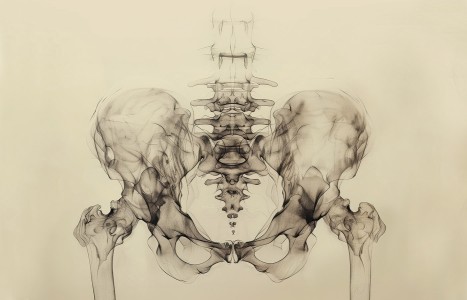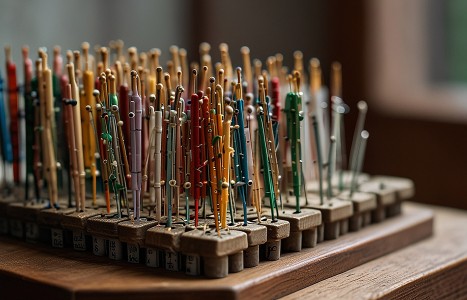People today want convenience, whether it be from their bank, credit card, favorite retail store, or restaurant. They demand it from the companies who hold their loyalty, including their health care providers (you). They don’t want to call and possibly be put on hold, and they want to use an app or schedule an appointment on your website. Here are three reasons your practice can gain by switching to online appointment scheduling.
Facing East: Facial Acupuncture in China and Japan, Part 2
It has been very interesting for me as a practitioner of an alternative healing modality to have made this long pilgrimage to the East to present my facial acupuncture protocol at an international TCM symposium in Shanghai. Our medicine enjoys an enviable position at the pinnacle of the healing arts. Acupuncture and herbs are integrated with Western medicine in modern state-of-the-art facilities.
We arrived at Tokyo's Narita Airport on a brilliantly sunny afternoon, gliding down from the skies into a verdant country landscape of pleasingly autumn colors. In the arrivals area, we were greeted warmly by the man most singularly responsible for our presence here, Takao Ueda (or Bin, to his friends). He had been the primary motive force behind the organization called JFACe, dedicated to the presentation of quality education in facial acupuncture in Japan. He proceeded to drive us to the trendy neighborhood of Shibuya-ku. As we wound our way into central Tokyo, a vast metropolis gradually appeared, linked by a bewildering maze of highways. If Shanghai was a city overcompensating somewhat in its endeavors to pull itself up by its bootstraps, Tokyo was a sophisticated and user-friendly urban landscape.
In Roppongi, we found ourselves in a warren of quiet backstreets, liberally sprinkled with restaurants, boutiques and bars. These labyrinthine streets can prove to be especially challenging to a Western visitor, as many of them lack any sort of name and signs in English are largely absent. This was entirely new to my partner, but I fondly recalled negotiating them, navigating by dead reckoning from one recognizable landmark to another.
Marketing Facial Acupuncture in Japan
Definite challenges were entailed in importing "American-style" facial acupuncture for the Japanese market. According to Bin, Oriental medicine, despite the distinguished pedigree of Japanese acupuncture practice, was considered to be decidedly old-fashioned in its approach to health, and eschewed by the vast majority of the population. There had been a considerable process of education involved, since my fundamental notion of facial acupuncture as incorporating a renewal of body and spirit that can happen at any age would be considered anomalous to the Japanese. To them, "renewal" was more readily associated with large-scale urban building projects, rather than a response to the inevitability of skin aging. Our new practitioners would be confronted with a potential audience for their treatments more attuned to Western practices of cosmetic surgery, with its quick fixes, than the organic changes achieved through facial acupuncture.
It was agreed that there would be a high level of interest in the material; Bin had been galvanized by the revelation that my system of facial acupuncture built upon both ancient knowledge and modern, innovative techniques. This was the case, as the seminar sold out quite early. He wanted to ensure that practitioners would have ample time for practice, so we extended it to three days. Prior to our arrival, all the groundwork had been laid. My textbooks and slideshows were translated into Japanese.
In Tokyo we were confronting an entirely different situation than that in China. In the former, I had appeared at an entirely state-sponsored event, with all the attendant protocols. Having made a reasonable case for facial acupuncture research, I could probably expect a significant commitment of resources should the Chinese decide to proceed. By contrast, this entry into the Japanese market had rested quite securely on the shoulders of one individual, largely responsible for arranging and attending to all the details.
After a couple of days to rest, and various strategic meetings, as well as a visit to the venue, Tokyo Therapeutic Institute, we were ready to go. It was yet another glorious late autumn day in Tokyo as we arose to prepare for our first foray into teaching a full-length facial acupuncture seminar in a non-English-speaking country. As we arrived at the school, I was greeted by any number of smiling Japanese faces, with "Ohayo gozaimasu" (Good morning). While I had taken Japanese lessons during my residency, few opportunities for practice had presented themselves in the intervening years. However, those long-neglected neurons soon began to fire.
CEU seminars here in North America are essentially informal affairs, particularly when I conduct them in a private venue, but given the unprecedented nature of this event, there were a great many formalities to be attended to prior to delving into the material. Lengthy introductions were made, and a uniquely Japanese set of social conventions observed.
We had previously decided that even though the students would have the entirety of the book and slide show in both Japanese and English, we would nevertheless translate everything that was said. This presented a bit of a challenge. With my performing background, I thrive on direct interaction with my students and much of what I offer is extemporaneous. Despite these communicative hurdles, the first morning of the seminar proceeded quite smoothly and, without going into too much detail, the transition from the didactic portion to the practicum session in the afternoon was accomplished more or less without a hitch.
This first module of training introduces the practitioners to the tonification and sedation protocols of Jacques Lavier as well as a few motor points for the neck. It has been my experience that the motor points require more attention. Not surprisingly, it was deemed necessary for me to demonstrate motor-point needling on individual groups of five students, permitting them to personally experience the skill set in even greater depth than had been possible in the demonstrations, filmed with a camera for their benefit.
After three wonderful but exhaustive days, we wrapped up the seminar with the requisite expressions of gratitude to all concerned and a plethora of commemorative photos. At a small get-together after, I was informed that the feedback regarding the seminar had been uniformly positive and that a return engagement would be discussed in meetings prior to my return to the States.
Bin and JFACe have already begun putting the wheels in motion for my return to Japan this fall, and we discussed the possibility of opening up these bilingual Japanese seminars to an international audience, as well as incorporating master classes. In the months ahead, Bin will be offering review classes to the practitioners from the seminar.
Spreading the Good Word
It has been suggested to me a couple of times in the past year that interest in facial acupuncture has peaked here in America. In rebuttal, I would argue that in this current economic climate, what we have to offer to our patients becomes an even more attractive option. Six months ago, banks might have been willing to float loans to individuals of moderate income for those face lifts and Botox injections. It seems unlikely, however, that this will continue, given the current credit crunch.
In contrast, I still continue to receive inquiries about facial acupuncture treatments. Based upon the reactions of my Asian practitioners, I feel confident in saying that what we have seen here in the U.S. in recent years is only the beginning. Here's to the global proliferation of this admirable and wonderfully transformative modality.


